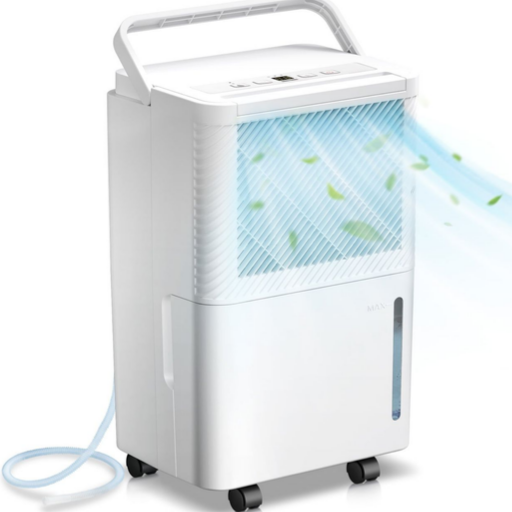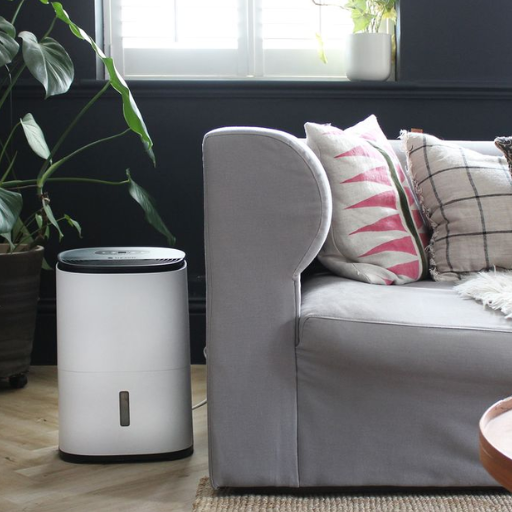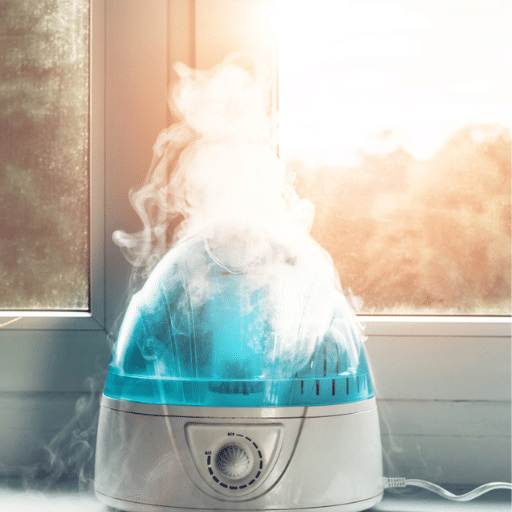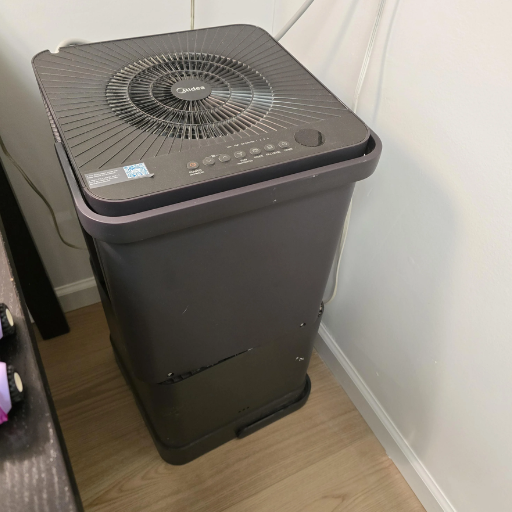Maintaining adequate humidity levels in your home is important for a healthy and pleasant living space for effective energy usage. A dehumidifier could be the right solution if you’re struggling with excess moisture during those hot summer months or in moist rooms like bathrooms and basements. This guide will cover everything important about when and why dehumidifiers should be used. We will cover the indicators of high humidity within an environment, the potential health risks relating to hygiene and infrastructure, and other circumstances where a dehumidifier can add significant value. After reading this article, you will know when and how to use a dehumidifier to improve comfort in your home.
How Do You Know If You Need a Dehumidifier?

There are a few prominent signs that indicate the necessity of a dehumidifier in your home. If windows have moisture, persistent stale smells, or mold is growing on surfaces, it suggests high humidity. Allergies such as sneezing and itchy skin can worsen, coupled with a damp sensation in the atmosphere. Some interesting mental models suggest that some rooms like the basement feel damp throughout the year no matter the season, which may require a dehumidifier. Permanent indoor humidity above 60% is a concern, and monitoring using a hygrometer enables accuracy.
Recognizing High Humidity Signs Inside Your Home
High indoor humidity can lead to a variety of issues, both for your health and your home. Excess moisture creates a perfect environment for mold growth, which can damage walls, furniture, and ceilings. Additionally, damp conditions often attract pests like dust mites, contributing to allergy and respiratory problems. Prolonged exposure to high humidity can also increase fatigue and discomfort, making your home less livable. Beyond health concerns, persistently elevated humidity levels can compromise the structural integrity of your home, causing wood to warp and paint to peel. Keeping humidity within the optimal range of 30-50% is essential to maintaining a healthy and comfortable indoor environment.
Using a Hygrometer to Measure Indoor Humidity Levels
A hygrometer is an essential tool for monitoring indoor humidity levels. Personally, I find it quite easy to use—simply place it in the room where you want to measure humidity, and it will provide a reading of the current moisture level in the air. Digital hygrometers are particularly convenient because they offer quick, accurate results and often display additional data like temperature. For optimal performance, I make sure to position the hygrometer away from windows, doors, or vents, as drafts or direct sunlight can affect the accuracy of readings. By monitoring humidity regularly, I can ensure it stays within the ideal range of 30-50%, creating a healthier and more comfortable living space.
Common Symptoms of Excessive Humidity
Excessive humidity can lead to a variety of issues, both for your home and your health. One of the most noticeable signs is the persistent presence of condensation, especially on windows and mirrors. This often indicates that the air is holding too much moisture. High humidity also fosters the growth of mold and mildew, which may appear as spots on walls, ceilings, or other damp areas in the home. A musty odor is another frequent indicator of mold development. Additionally, excessive moisture can warp wood, peel paint, and damage furniture.
From a health perspective, high humidity can exacerbate respiratory problems, causing difficulty in breathing, particularly for individuals with asthma or allergies. Symptoms like coughing, sneezing, or irritation can occur due to the increased presence of dust mites or mold spores in humid environments. To mitigate these effects, maintaining a humidity level within the ideal 30-50% range is crucial.
What Are the Benefits of Using a Dehumidifier?

Using a dehumidifier offers numerous benefits for both your home and health. It helps maintain optimal humidity levels, preventing the growth of mold and mildew, which can damage walls, furniture, and other surfaces. Dehumidifiers also reduce allergens such as dust mites, improving air quality and providing relief for those with asthma or allergies. Additionally, a controlled humidity level can protect your home’s structural integrity and extend the lifespan of electronic devices. By creating a more comfortable and healthy living environment, a dehumidifier is an essential tool for managing indoor air quality.
How Dehumidifiers Improve Indoor Air Quality
Since dehumidifiers reduce moisture that encourages mold, bacteria, and mildew growth, they have a positive effect on air quality. Controlling the level of humidity helps in the control of some allergens like dust mites, which benefits asthma and allergy patients. In addition, breathing is easier in environments with lower humidity as musty smells are absent. The use of dehumidifiers helps to maintain health and home care by keeping the relative humidity between 30% and 50%. It also greatly reduces the possibility of structural damage or decay from moist environments.
Protecting Your Home From Mold and Mildew
Mold and mildew problems can arise in basements, bathrooms, and kitchens where excess moisture exists because these fungi can disrupt your health and the deep structure of your house. Make sure to use exhaust fans and open windows frequently to enable free flow of air. This will increase ventilation while removing sources of excess moisture. Fix plumbing and roofing leaks immediately so that water sources which encourage mold growth are removed. A dehumidifier can also be helpful in maintaining ideal humidity levels and controlling moisture. In addition, cleaning and drying surfaces immediately after spills or flooding helps in preventing mold infestation. Make sure to regularly check and clean surfaces that tend to accumulate moisture and protect them by using mold resistant paints or drywall. Being proactive about mold and mildew will greatly reduce risks to your home’s health.
Alleviating Allergy Symptoms with Reduced Humidity
Fostering an environment that is home to mold and dust mites can bring about dampness turning into a dangerous hazard for allergy patients. Therefore, keeping a house’s humidity between 30 and 50% aids in reducing chances of being allergic. Moreover, using a dehumidifier can significantly increase the extraction of excess moisture in the air. When construction ventilation is applied in combination with exhaust systems placed in the kitchen and bathroom, these spaces become dry. Further cleaning of furniture and carpets aids in reducing the number of allergens while improving the quality of air leading to the ease of any type of allergy.
When Is the Best Time to Use a Dehumidifier?

The best time to use a dehumidifier is when indoor humidity levels consistently exceed 50%, which can create an environment conducive to mold growth, dust mites, and other allergens. This is often during warmer months or in naturally humid climates. Additionally, dehumidifiers are particularly useful in spaces like basements, bathrooms, or kitchens where moisture tends to accumulate. Using a hygrometer can help monitor humidity levels and determine when a dehumidifier is necessary.
Using Dehumidifiers During Summer Months
During summer, high humidity can lead to discomfort, mold growth, and the presence of allergens, making dehumidifiers an essential tool. They work by extracting excess moisture from the air, maintaining optimal humidity levels between 30% and 50%. This not only improves air quality but also protects your home from potential structural damage caused by moisture buildup. To maximize efficiency, place dehumidifiers in areas prone to humidity, such as basements and bathrooms, and ensure they have proper airflow around them. Regularly empty the water reservoir or connect a drainage hose for continuous operation. By monitoring your home’s humidity with a hygrometer, you can adjust settings accordingly, ensuring a balanced and comfortable indoor environment throughout the summer months.
Should You Run a Dehumidifier in Winter?
Running a dehumidifier in winter depends on the specific conditions of your home. If you live in a region with cold, dry winters, using a dehumidifier is generally unnecessary, as the air tends to lack moisture. However, in homes where the interior has excessive humidity due to activities like cooking, showering, or poor ventilation, a dehumidifier can help prevent mold growth, condensation on windows, and other moisture-related issues. It’s particularly useful in areas like basements, which might remain damp even in colder months. For efficient use, monitor indoor humidity levels with a hygrometer and aim for a range of 30-50% to maintain comfort and reduce potential damage caused by excess moisture.
Ideal Times to Remove Moisture From the Air
Removing excess moisture from the air is essential during specific times to maintain a comfortable and safe indoor environment. The ideal times include:
After Activities Producing Humidity – Daily activities such as cooking, showering, or laundry often generate moisture. Use a dehumidifier or ventilate the area right afterward to prevent excess humidity from lingering.
During Rainy or Humid Seasons – Excess humidity is common in spring and summer or during prolonged rainy periods. Running a dehumidifier consistently during these times can help maintain ideal indoor humidity levels and prevent issues like mold and mildew.
When Indoor Humidity Exceeds 50% – Use a hygrometer to monitor humidity levels. If the reading goes above 50%, it’s a good time to run a dehumidifier to avoid discomfort, condensation, or structural damage.
Timing is crucial for managing moisture efficiently. Adjust usage according to fluctuations in weather, household activities, or specific problem areas, like basements or bathrooms, to ensure a healthier indoor environment.
Where in Your Home Can a Dehumidifier Help?

A dehumidifier can be beneficial in several areas of your home where excess moisture tends to accumulate. Basements are common trouble spots due to their proximity to the ground and limited ventilation. Bathrooms often experience high humidity from hot showers, making them prone to mold and mildew. Kitchens can also benefit, as cooking and dishwashing release significant moisture into the air. Additionally, laundry rooms are another hotspot, with drying clothes contributing to elevated humidity levels. Even bedrooms and living rooms may require dehumidifiers if they experience poor airflow or show signs of dampness. Identifying these problem areas ensures targeted humidity control for a comfortable and healthy home environment.
Basements and Areas Prone to High Humidity
Basements are particularly susceptible to high humidity due to their location below ground level, where moist air and poor ventilation often lead to moisture accumulation. High humidity in these spaces can cause a variety of issues, including mold growth, structural damage, and unpleasant odors. To combat these problems, ensure proper waterproofing of walls and floors, utilize a high-capacity dehumidifier tailored for large spaces, and improve airflow through ventilation systems or exhaust fans. Regular inspections to check for leaks, cracks, or pooling water will also help address potential sources of moisture. Implementing these steps creates a more pleasant and safe environment, preventing long-term damage and ensuring air quality remains optimal.
Bathrooms and Kitchens: Managing Moisture
Effective ventilation is necessary for controlling moisture in kitchens and bathrooms. Ventilation fans in the bathroom and kitchen should be mounted to vent outside and should be used during cooking, showers, or dishwashing. Permit fans to operate for a few minutes after these tasks to reduce humidity. Cleaning exhaust vents and fans increases their CFM ratings. Caulk should be placed around sinks and tubs, between the backsplashes, and seal joints and cracks to contain water. To further mitigate permeability, walls and ceilings should be painted with waterproofed paint. Addressing leaks in faucets and pipes helps contain water damage as well. Keeping surfaces clean and dry further limits mold and mildew proliferation, therefore improving air quality within the damp areas. Increasingly employing these methods preserves an enduring and healthy environment by managing moisture.
Whole-House vs. Portable Dehumidifier Options
Evaluate both it’s merits and drawbacks features before deciding on a whole-house or portable dehumidifier. For example, a whole-house dehumidifier integrates with your HVAC system to monitor moisture levels throughout the entire home. It works best for larger spaces, is automated, and reduces manual maintenance works. On the downside, it requires considerable initial investment and professional installation services.
Portable dehumidifiers are less expensive and offer greater flexibility as they can be moved between rooms. Protable dehumidifiers are easy to set up and the provide targeted solutions to specific areas of humidity. On the flip side, they require frequent removal of water tanks or the connecting of hoses to drainage systems, and their size greatly limits the amount of water they can remove compared to whole-house systems. After considering all these factors, determine what best fits your home’s size, budget, and moisture control needs.
How to Choose the Best Dehumidifier for Your Needs?

When selecting a dehumidifier, start with assessing the shape of the zone that requires dehumidification. If the space is bigger or requires full house coverage, then a whole house dehumidifier is more convenient, although it needs more investment and has to be installed by a professional. For users looking for a small area dehumidifier, a portable unit fits the bill best because it is cost-effective. After that, consider the humidity levels in your area and see if the advertised capacity, usually measured in pints per day, meets your requirements. Lastly, think about maintenance tasks like the removal of water tanks or installation of drainage systems, energy consumption, noise level, or built-in hygrometers. However, no matter what strategy you choose, remember to focus on features that best align with your budget and lifestyle preferences to ensure the solution will be effective.
Sizing a Dehumidifier for Different Spaces
Choosing the right size dehumidifier depends on the square footage of the space and the extent of the humidity problem. For small spaces like bathrooms or closets (up to 300 square feet), select a unit with a 20-30 pint capacity. Medium-sized rooms (300-700 square feet) typically require a 30-50 pint dehumidifier to efficiently control moisture. For large spaces or basements (700-1,200+ square feet), opt for a 50+ pint model or even a whole-house dehumidifier for comprehensive coverage.
Additionally, consider environmental factors. Spaces with higher humidity levels, such as basements or poorly ventilated areas, may need a dehumidifier with a larger capacity even if the room is smaller. Consult the dehumidifier’s capacity chart provided by manufacturers for accurate recommendations. This ensures optimal performance and protects your home from excess moisture, mold, and mildew.
Energy Costs and Efficiency Considerations
When evaluating energy costs, prioritize dehumidifiers with Energy Star certification, as these models meet strict energy efficiency standards and consume less electricity over time. An energy-efficient dehumidifier not only reduces utility bills but also limits environmental impact. Look for units with advanced features such as auto-shutoff, adjustable humidistat, and programmable timers to optimize energy usage.
For precise cost estimation, calculate the unit’s wattage and operational hours, and apply your local electricity rate. On average, most dehumidifiers use between 300 to 700 watts per hour, depending on capacity and runtime. To further improve efficiency, ensure proper maintenance by cleaning filters regularly and placing the dehumidifier in an ideal location, such as centrally in the room and away from obstructions. These steps help maximize moisture removal while minimizing energy expenditure.
Features to Look for When Buying a Dehumidifier
When selecting a dehumidifier, consider key features that suit your needs and space requirements. Firstly, capacity is crucial; ensure the unit can handle the moisture level in the intended area, measured in pints removed per day. For instance, a small, damp room may require a 20-30 pint unit, while a basement or larger space might need a higher capacity model.
Energy efficiency is another vital factor. Look for units with an ENERGY STAR certification, which consume less electricity and reduce overall costs. Devices featuring an adjustable humidistat allow for precise humidity control, ensuring optimal comfort and efficiency.
Additionally, consider drainage options. Models with continuous drain capabilities or built-in pumps eliminate the hassle of regularly emptying a water tank. Features like auto-shutoff for when the tank is full and programmable timers add convenience and safety. Also, noise level should be factored in, particularly if the dehumidifier will operate in living or sleeping areas.
Lastly, prioritize portability and size for ease of placement and movement, especially if you plan to use the unit across multiple rooms. Wheels, handles, and compact designs make such transfers seamless. By focusing on these core features, you can ensure you select a dehumidifier that balances performance, efficiency, and usability.
What Humidity Level Should You Maintain?

The optimal range for indoor humidity levels is between 30% and 50%. Staying within this range prevents discomfort from overly dry or irritated air as well as issues such as the growth of mold, dust mites, or moisture excess. For damp spaces like basements, aim for 30-40% and help prevent moisture buildup. To maintain comfortable conditions in the home, use a hygrometer to check humidity levels and adjust the dehumidifier settings accordingly.
Ideal Relative Humidity for Different Seasons
Humidity levels indoors can vary with seasonal changes, and adjusting them appropriately is key to maintaining comfort and health. During winter, heating systems often cause the air to dry out, so aim for a humidity level of 30%-40% to prevent excessively dry air, which can lead to respiratory issues and cracked furniture. Conversely, in summer, higher outdoor humidity can raise indoor levels as well. Keeping your indoor humidity in the range of 40%-50% is ideal to combat excessive moisture and reduce the risk of mold growth or a sticky, uncomfortable atmosphere. A consistent relative humidity level within these ranges throughout the year ensures optimal air quality and enhances overall home comfort.
Balancing Humidity to Prevent Dust Mites
In order to help control the allergens, it is helpful to maintain indoor relative humidity at levels below 50% as allergens subside below these levels. This translates to an optimal range of 30%-50%. Thus, controlling indoor moisture levels, especially in warm and humid climatic zones, is best achieved with the aid of air conditioners and dehumidifiers. Furthermore, periodic washing of bedding and fabric surfaces at temperatures above 130°F/54°C can eliminate dust mite remnants and triggering substances. When combined with dusting and vacuuming, these simple practices should promote the maintenance of a dust-free environment. Proper humidity control positively affects air quality and comfort levels.
How Low Humidity Levels Affect Your Home
Low humidity levels can have a noticeable impact on your home and well-being. When indoor air is too dry, it can cause wooden furniture, flooring, and structural components to shrink, crack, or warp over time. Similarly, low humidity can lead to peeling wallpaper and chipped paint, damaging your home’s aesthetic. Beyond structural effects, dry air can increase static electricity, making daily activities like handling electronics or walking on carpets more uncomfortable. From a health perspective, low humidity can dry out skin, nasal passages, and eyes, potentially leading to irritation and an increased susceptibility to colds and respiratory issues. To mitigate these effects, using a humidifier to maintain humidity levels between 30%-50% can help protect both your home and health. Consistently monitoring and adjusting your indoor environment ensures comfort and prevents long-term damage.
References
Frequently Asked Questions (FAQ)
Q: How do I know when to use a dehumidifier in my home?
A: You should consider using a dehumidifier when the humidity in your home consistently exceeds 50%, as high humidity can lead to mold growth, musty odors, and discomfort. A dehumidifier can make your home feel more comfortable and prevent damage to your home.
Q: What are the signs that I need a dehumidifier for my home?
A: Common signs include persistent dampness, condensation on windows, musty smells, and visible mold spots. If the air in your home feels sticky or your home feels uncomfortable, a dehumidifier might be necessary.
Q: How does a dehumidifier work to reduce humidity?
A: A dehumidifier works by drawing humid air into its coils, where the moisture condenses into water droplets and is collected in a tank or drained away. The drier air is then circulated back into the room, effectively reducing the humidity level.
Q: When is the best time to use a dehumidifier in the summer?
A: Using a dehumidifier in the summer is effective when temperatures and humidity levels are high, typically during hot, muggy days. It helps keep your home cool and reduces the load on your air conditioning system.
Q: How do I choose the right dehumidifier for my home?
A: To choose a dehumidifier, consider the size of the area you need to dehumidify, the level of humidity, and the unit’s capacity. A higher capacity dehumidifier may be needed for larger or damper areas.
Q: Can a dehumidifier be used year-round?
A: Yes, a dehumidifier can be used year-round, especially in areas with high humidity or in spaces prone to moisture, such as basements. However, its use is most common during the summer and early fall.
Q: What are the benefits of using a dehumidifier in your home?
A: Dehumidifier benefits include preventing mold and mildew growth, reducing allergens, protecting furniture and electronics from moisture damage, and improving overall air quality to make your home more comfortable.
Q: Is there a difference between a humidifier and a dehumidifier?
A: Yes, a humidifier adds moisture to the air, which is useful in dry climates or during winter, while a dehumidifier removes excess moisture, which is beneficial in humid conditions to prevent mold and discomfort.
Q: How can I maintain my dehumidifier to ensure it works efficiently?
A: Regularly clean the air filter, empty the water tank, and ensure proper ventilation around the unit. Periodically check for any signs of wear or damage to keep your dehumidifier working efficiently.



